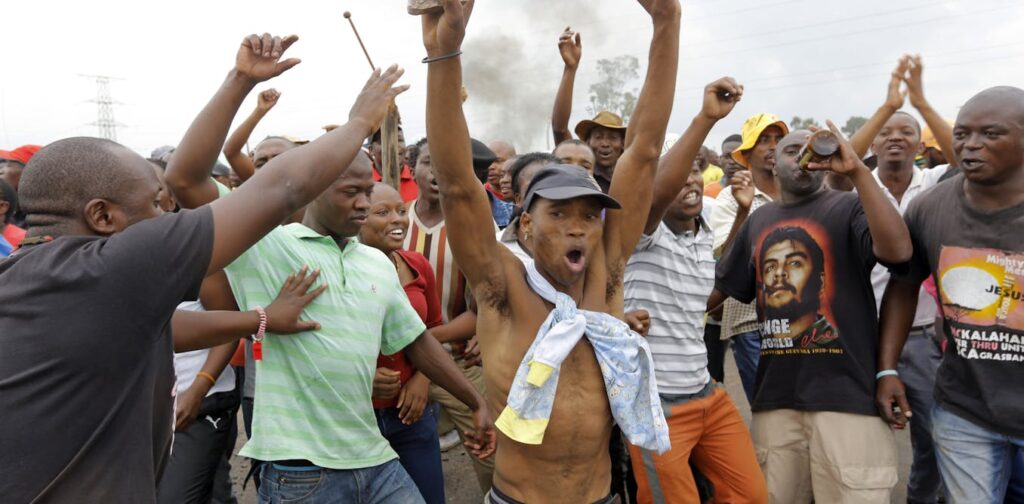South Africans are not happy. According to the recent Bloomberg Misery Index, South Africa is the second most miserable country on earth. The top emerging country is Venezuela.
This is not all that surprising, given that the country is embroiled in a multifaceted crisis. It also has one of the highest unemployment and inequality levels in the world.
Unfortunately, recent downgrades by credit rating agencies and the fact that the country is in recession mean that this terrible situation is unlikely to get better anytime soon.
As a result, South Africa's poor have little chance of improving their lives. They will therefore become more dependent on the provision of state services. They will also increasingly become victims of two systems of exploitation that are deeply embedded in the country's socio-political and economic systems.
The first is the mechanism of patronage and state capture recently documented in a leading scholar's report. The effects of this corruption are that capital allocated to service delivery is wasted, the private sector is squeezed out, and the monopoly position of dysfunctional state-owned enterprises distorts the economy.
The second is when state capture merges with patronage politics at the local government level. This is achieved by controlling and staffing local governments with unqualified party supporters, or cronies, who extract further rents through low-level corruption, while distributing services inefficiently from a shrinking pool of capital. .
As a result, poor people have to pay additional taxes in the form of bribes in order to access state services that are unreasonably priced and inefficient. Moreover, as state predation and local government corruption intensify, service availability and delivery decline. This means that the poor are exposed to bribe inflation to take advantage of shrinking productive capacity. Protests against violent service delivery will inevitably escalate.
Demographics and education
South Africa's five-year average economic growth rate fell from 4.8% in 2004-2008 to 1.9% in 2009-2013. From 2014 to 2016, the average was 1.1%. At the same time, irregular, wasteful, and fraudulent expenditures also ballooned. It is therefore not surprising that the number of violent protests increased from an average of 21 per year between 2004 and 2008 to 164 per year between 2014 and 2016.
Unfortunately, South Africa's demographic and education statistics do not suggest that this trend is likely to reverse any time soon.
South Africa's youth statistics are depressing. Young people between the ages of 15 and 35 make up 55% of the country's 36 million working-age population. Of the 19.7 million young people, only 6.2 million are employed, 3.6 million are unemployed but actively looking for work, and 1.53 million have stopped looking for work. The remaining 8.4 million people are in school, higher education, or are housewives.
The youth unemployment rate is 36.9%. This is almost double the adult unemployment rate. 40% of black youth are unemployed, compared to 11% of white youth.
Taking education level into account, 2011 data shows that the unemployment rate for those aged 25-35 with less than an education was 47%, compared to 33% for those with an education; The unemployment rate was 20%. or an after-school certificate. However, if we look at the younger group aged 20 to 24, 16% are attending school, 12% are in after-school education, 21% are employed, and 51% are unemployed and have no education or training. I haven't received it.
Considering that the share of black professional, managerial and technical workers in the 25-35 age group has declined by 2% over the past 20 years (meaning this generation is less skilled than their parents) ), and statistics for the 20-24 age group show that this trend could get even worse.
Alarmingly, research shows that countries like South Africa with growing youth and low levels of education are more likely to suffer from political instability. This is because demographic change occurring in a stagnant economy with high levels of corruption increases the likelihood of political violence by poorly educated young people due to lower opportunity costs.
Correcting system failures
South Africa's current crisis is a systemic failure that spans national and local government. Although the political costs of corruption may now reach unacceptable levels, short-term and long-term interventions are needed to reverse the effects of state collapse on the poor.
Short-term measures need to include holding civil servants to account, reforming state-owned enterprises, and correcting numerous systemic weaknesses at all levels of government.
However, public and private stakeholders also need to develop long-term policies that improve the quality and throughput of the country's secondary education system and entrench youth employment incentives. It is also necessary to reform and revitalize skills training and rebuild the technical and vocational education system.
If South Africa is to get back on its feet, the country's badly frayed socio-economic fabric will need to be resewn, not just patched together.

